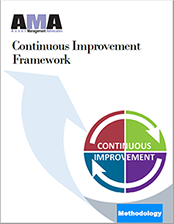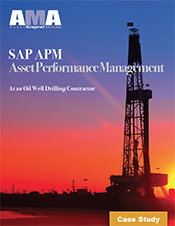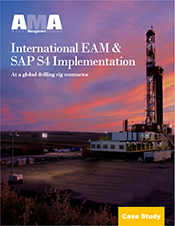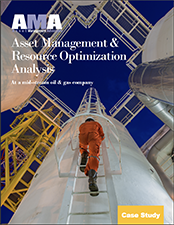AMA is a team of expert consultants with deep industry, functional and technical expertise.
In response to the changing business environment, many organizations are launching strategic asset management programs to support operational excellence. But many of these programs often fall short of achieving targeted business objectives, creating business disruption from process and technology change with marginal performance improvement. Changing the way people and businesses operate is no easy task. In our experience working with clients on such initiatives, “falling short” often points to concentrating too much on the technology upgrade itself, and not enough on the core functions of strong, foundational, and integrated overall asset management education and practices.
AMA Philosophy
Every organization needs an advocate.
AMA provides comprehensive education and consulting services, from an advocate’s perspective.
Building Strengths: The most effective method to ensure long-term success in any project is to contribute to the strengths and competencies of the client’s core team.
Empowering the Team: Our philosophy is to train and coach the core, peripheral, and executive teams to gain clarity on the path of results-driven asset management.
Deep System Knowledge: We have extensive and in-depth Enterprise Asset Management System knowledge and experience, including SAP, Maximo, Infor, OracleEAM, and others. Combined with our strategic asset management approach, our services are results-driven to improve business outcomes.
AMA Methodology & Services
AMA’s approach is key to bringing the right disciplines for each situation to maximize the ROI, while ensuring a sustainable solution, and an empowered owner.
AMA Case Studies
 At a Global Drilling Contractor, AMA implemented proprietary configuration, business process and master data standards, procedures, and how-to templates. The implementation was completed on budget and schedule. Immediate reporting capabilities had not been possible before, including separation of malfunction and breakdown reporting preventive and general maintenance, inventory consumption/movement, and labor charges, none of which the organization had visibility to before.
At a Global Drilling Contractor, AMA implemented proprietary configuration, business process and master data standards, procedures, and how-to templates. The implementation was completed on budget and schedule. Immediate reporting capabilities had not been possible before, including separation of malfunction and breakdown reporting preventive and general maintenance, inventory consumption/movement, and labor charges, none of which the organization had visibility to before.
 At a Pipeline company, AMA implemented proprietary configuration (including alternative labeling), business process and master data standards, procedures, and how-to templates. In addition to the implementation of the SAP system, AMA was contracted to harvest tags from thousands of drawings and assemble the asset registry, maintenance plans, task lists, and where possible bill of materials. Consistency and completeness was of the utmost importance for the client while staying within their budget.
At a Pipeline company, AMA implemented proprietary configuration (including alternative labeling), business process and master data standards, procedures, and how-to templates. In addition to the implementation of the SAP system, AMA was contracted to harvest tags from thousands of drawings and assemble the asset registry, maintenance plans, task lists, and where possible bill of materials. Consistency and completeness was of the utmost importance for the client while staying within their budget.
 At a regional Municipal Water Utility, AMA performed a strategic asset management assessment following the Institute of Asset Management’s (IAM) ISO 55x Assessment tool-kit. The survey was performed to set out a base-line understanding for all stakeholders regarding the utility’s current Asset Information Management Maturity. Specific focus was given to the requirements of section 7.5 of ISO55001 which stipulates the need to identify information required to support its assets, asset management, asset management systems, and the achievement of its goals. A deeper dive into their data, systems, and practices was undertaken and gauges against AMA’s standards.
At a regional Municipal Water Utility, AMA performed a strategic asset management assessment following the Institute of Asset Management’s (IAM) ISO 55x Assessment tool-kit. The survey was performed to set out a base-line understanding for all stakeholders regarding the utility’s current Asset Information Management Maturity. Specific focus was given to the requirements of section 7.5 of ISO55001 which stipulates the need to identify information required to support its assets, asset management, asset management systems, and the achievement of its goals. A deeper dive into their data, systems, and practices was undertaken and gauges against AMA’s standards.

For a major O&G organization, AMA developed a series of PowerBI dashboards that provided insight and measurement for production order, service order, and project management analysis. As part of the project, a governance structure was established to manage and action the improvement opportunities uncovered by the dashboards as the foundation. The dashboards provided vital real-time information that was previously not available allowing a proactive approach to managing the business. With the increased visibility, project managers are now able to monitor project status and schedules in real-time and drill down into the details and root-cause analysis of current issues as required. This is a break-through on enhancing and improving data accuracy for daily, weekly, and monthly reporting and eliminates the need to run multiple reports.









